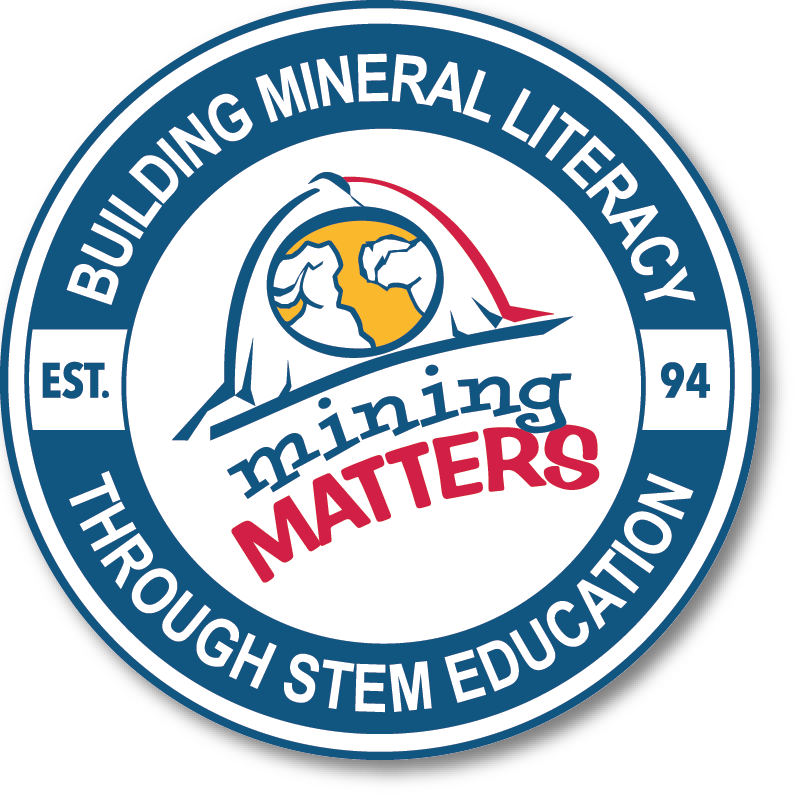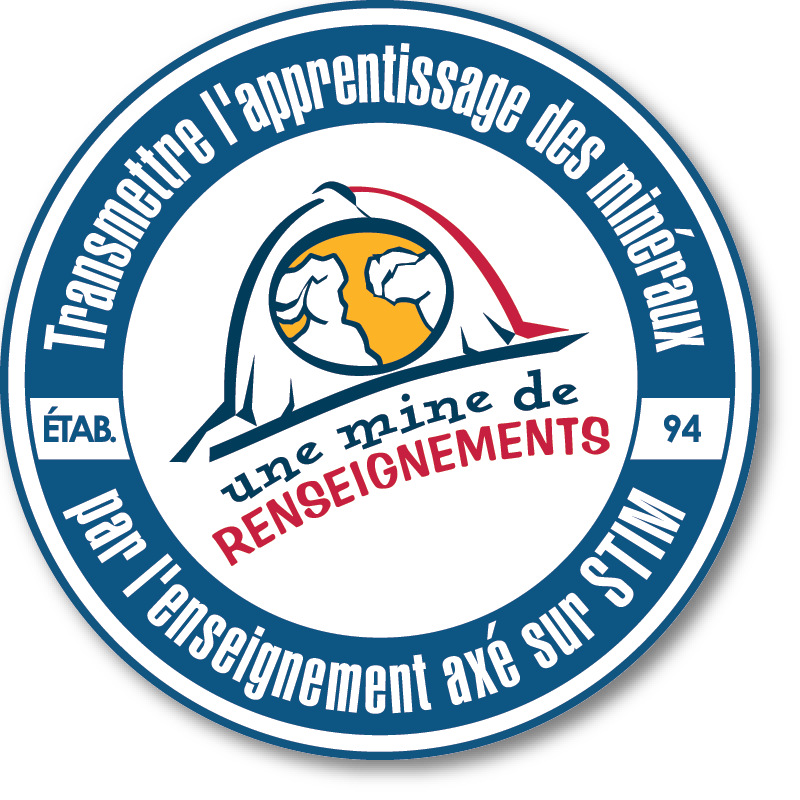Grow Your Own Crystals
Safety
Ask an adult to help you with this activity. Ask them to assist you in using the stove or hot plate and when making and handling the hot solutions. Be careful when using scissors and food colouring as it can stain hands/clothing/containers. Be careful when handling Borax. Be sure to read the health and safety instruction in on the box. Do not breathe in Borax dust or let it come in contact with your eyes. Do not drink any of the solutions.
Background
A crystal structure is made of atoms. Minerals have a specific crystal structure that is an ordered series of atoms, ions or molecules. There are seven crystal systems, including triclinic, monoclinic, orthorhombic, tetragonal, trigonal, hexagonal, and cubic.
Mineral crystals tend to form into the same shapes when they have time and space to grow. The rate of crystal growth is influenced by several factors including temperature, the concentration of the mineral in solution, humidity, and others. A nucleation point is required to successfully grow a crystal from a solution. The nucleation point is the starting point or first building block on which the rest of the crystal grows. A nucleation point can be anything from a crevice or rough patch to a crystal that is already present.
Crystals form from solutions. There are three types of solutions: unsaturated, saturated and supersaturated. A saturated solution is where the fluid has as much of a dissolved substance as it can hold without that substance coming out of the solution. An unsaturated solution has less of a substance dissolved in it than in its saturated state. In some cases, a solution may become supersaturated when it
is holding more dissolved substance than should be possible. Supersaturated solutions are highly unstable and will return to a saturated state with minor changes.
The rate at which a crystal grows will influence its characteristics. A fast growing crystal will likely be flawed and include impurities. A slow growing crystal will likely have few flaws and impurities. The number of crystals that grow will depend on the number of nucleation points that are present. Many nucleation points will commonly result in small crystals while few nucleation points will result in the growth of larger crystals.
Objectives
Have fun growing your very own crystals of Halite (salt), an evaporite mineral, at home. Observe how each crystal forms into the same shape as it grows. Experiment with different varieties of halite (iodized
vs. non-iodized) to other mineral solutions to compare and contrast their crystal shapes. Other minerals of interest include Magnesium Sulfate (Epsom Salts), Sodium Tetraborate (Borax), and Alum(Potassium Aluminum Sulfate). Crystals grown from these mineral solutions may display different shapes but all the crystals grown from a particular mineral solution will have the same structure.
Materials
- Water (Distilled, if possible)
- A small cooking pot
- Hot plate/stove
- ½ Cup of Halite (Salt)
- Scissors
- Clear glasses/cups or shallow dishes
- Food colouring (optional)
- Construction paper (dark colours)
- Sponge (optional)
- Paper (to record your observations)
- Markers
Instructions
- Cut the paper or sponge to fit the bottom of the cup or dish and place it there (label each with the name).
- Find a place where the glasses/cups or dishes can be left undisturbed for several days.
- Fill the cooking pot approximately half way with water.
- Set it on the stove to boil.
- Gradually add salt to the boiling water.
- Continue to add salt until the solution is “saturated” (i.e., no more salt will dissolve).
- Add a drop of food colouring to the solution, if desired.
- Carefully pour a small amount of the solution into each container. The solution should no more that a few millimeters in depth.
- Create an observation sheet to record the results of your experiment. Record information like the amount of salt that was used to create the saturated solution, the number of days that it took to form crystals, the shape of crystals that formed, etc.
- Take a photograph of your experimental setup.
- Leave the glasses/cups or dishes untouched until all the liquid has evaporated.
- Observe and record, using your observation sheet and a camera, the process of crystal growth over the course of the experiment.
Conclusions
Consider the questions below and the results of your experiment
- What shape are the crystals?
- How did adding food colouring affect the crystals?
- Do you think the method you used in your experiment is similar to how halite forms on Earth?




